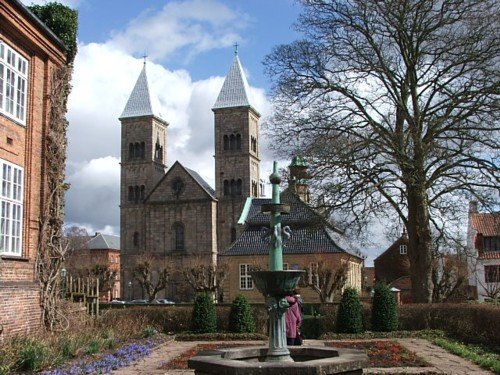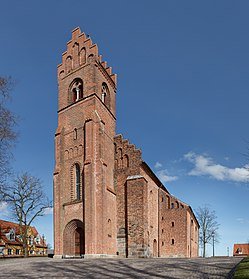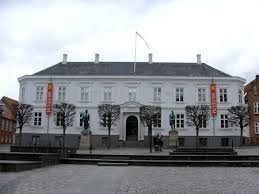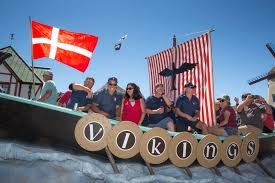Viborg is a city in Denmark, the seat of Viborg Municipality. The seat of the Western District Court (Vestre Landsret) is located here. Viborg is located in the northern part of Central Jutland, on the lakes Nørresø and Søndersø. The city lies approximately halfway between Randers (44 km) and Holstebro (62 km), a dozen or so kilometres south of Hjarbæk Fjord.

- Cathedral (Domkirke) – original, three-nave in Romanesque style, begun in 1130, completed about 50 years later, thoroughly rebuilt in the years 1864-1875. From the original church, which was then demolished, only the crypt survived. In 1901, the interior of the rebuilt cathedral was decorated with frescoes by Joakim Skovgaard illustrating biblical scenes. Work on them was completed in 1906, and the decoration of the temple vault in 1913. In the cathedral, in front of the main altar, there is the tomb of the Danish king Eric V, who was also crowned here in 1259.

- Dominican Church (Søndre Sogns kirke) – Gothic, mentioned in 1246, once part of a Dominican monastery destroyed during the Reformation.

- Skovgaard Museum (Skovgaard Museet) – a museum of the artist who decorated the cathedral with frescoes in the early 20th century. The museum is located in the former town hall building from 1729.

- Diocesan Museum (Stiftsmuseum) – an exhibition on the history of the city from ancient times to the present.

- Bishop’s Palace (Bispegården) – from around 1728, built on the site of an earlier one that burned down in the great fire of Viborg in 1726.
- Jutland National Archives (Landsarkivet for Nørrejylland) – from 1891, collecting archives from Jutland.
- Franciscan monastery (Gråbrødrekloster) – part of the buildings that survived from the monastery that existed here before the Reformation.

- Today, Viborg is an important Danish city centre, serving as the capital of the Central Jutland region. The city also has an incredibly picturesque old town, the most valuable monument of which is the magnificent neo-Romanesque cathedral (Domkirke). This church was built at the turn of the 12th and 13th centuries, and its current shape was obtained during the last major reconstruction carried out in the years 1864-1875 (from the original church, only the crypt survived). In its spacious interior, attention should be paid to the impressive paintings by Joakim Skovgaard covering the ceiling, vaults and walls, as well as the main altar. Other interesting monuments in the city include the post-Dominican Gothic church Søndre Sogns kirke, the 18th century Bishop’s Palace, the remains of the former Franciscan monastery (Gråbrødrekloster), the monument to the leading Danish theologian of the Reformation period, Hans Tauzen, and the Skovgaard Museum located in the building of the former city hall.
- When to go to Viborg?? The best months for weather in Viborg are: May, June, July, August and September. On average, the warmest months are June, July and August. February is the coldest month. The wettest months are July, August, October and December. The best months for swimming are July and August.
